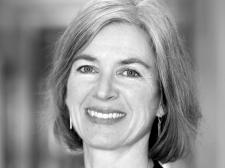Interview: Nobel chemistry laureate Jennifer Doudna on the promise and peril of the genetic editing revolution
By John Mecklin,
Bulletin of the Atomic Scientists
| 12. 07. 2020
Just weeks after I interviewed her this September, UC Berkeley professor Jennifer Doudna and her colleague Emmanuelle Charpentier were jointly awarded the Nobel Prize in Chemistry for their discovery of the CRISPR/Cas9 genetic editing tool. An acronym for Clustered Regularly Interspaced Short Palindromic Repeats, CRISPR sequences were found in bacteria, where they protect against viruses by chopping them into pieces. Doudna and Charpentier devised a way to reprogram these genetic scissors, so they could be directed to cut any DNA molecule at a predetermined site.
The CRISPR/Cas9 editing tool has greatly reduced the amount of time needed to edit genes and is now in use by researchers around the world. “There is enormous power in this genetic tool, which affects us all. It has not only revolutionized basic science, but also resulted in innovative crops and will lead to ground-breaking new medical treatments,” Claes Gustafsson, chair of the Nobel Committee for Chemistry, said in a press release accompanying the Nobel Prize announcement.
The positive potential of CRISPR editing tools is indeed breathtaking. “This tool has contributed to many important discoveries...
Related Articles
By Jenny Lange, BioNews | 12.01.2025
A UK toddler with a rare genetic condition was the first person to receive a new gene therapy that appears to halt disease progression.
Oliver, now three years old, has Hunter syndrome, an inherited genetic disorder that leads to physical...
By Rachel Hall, The Guardian | 11.20.2025
Couples are needlessly going through IVF because male infertility is under-researched, with the NHS too often failing to diagnose treatable causes, leading experts have said.
Poor understanding among GPs and a lack of specialists and NHS testing means male infertility...
By Pam Belluck and Carl Zimmer, The New York Times | 11.19.2025
Gene-editing therapies offer great hope for treating rare diseases, but they face big hurdles: the tremendous time and resources involved in devising a treatment that might only apply to a small number of patients.
A study published on Wednesday...
By Aisha Down, The Guardian | 11.10.2025
It has been an excellent year for neurotech, if you ignore the people funding it. In August, a tiny brain implant successfully decoded the inner speech of paralysis patients. In October, an eye implant restored sight to patients who had...




